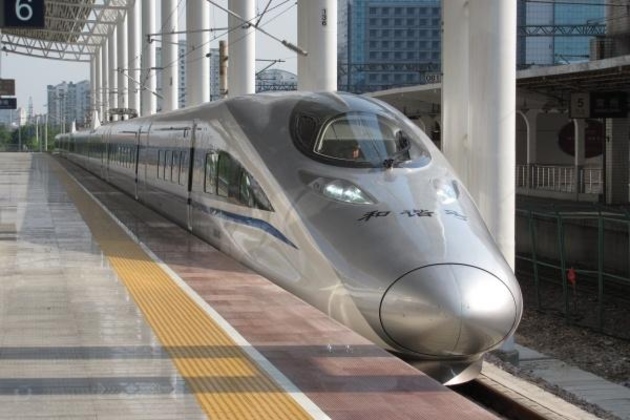- Joined
- Oct 19, 2012
- Messages
- 1,263
- Points
- 0
[h=2]World's longest high-speed rail line begins service in China[/h] by Chris Welch
 At 9AM local time Wednesday, China officially launched service on the world's largest high-speed rail line, which covers a distance of approximately 1,428 miles between Beijing and Guangzhou. Older rail lines required more than 20 hours to make that trek, but high-speed cars travel at a consistent speed of 186 miles per hour, reaching China's southern economic hub in only eight hours. As the New York Times reports, China has invested heavily in its high-speed railway infrastructure (now spanning 5,800 miles) in recent years, with the project often helping to prop up the country's economy. Each line demands significant human resources, with up to 100,000 workers brought on to help operations.
At 9AM local time Wednesday, China officially launched service on the world's largest high-speed rail line, which covers a distance of approximately 1,428 miles between Beijing and Guangzhou. Older rail lines required more than 20 hours to make that trek, but high-speed cars travel at a consistent speed of 186 miles per hour, reaching China's southern economic hub in only eight hours. As the New York Times reports, China has invested heavily in its high-speed railway infrastructure (now spanning 5,800 miles) in recent years, with the project often helping to prop up the country's economy. Each line demands significant human resources, with up to 100,000 workers brought on to help operations.
Yet as US cities continue to plot out high-speed rail solutions, the breakneck pace at which China has developed its own system has also raised concerns, particularly after a 2011 collision left 40 people dead. Still, the trains ultimately prove safer than China's roadways, which see over 70,000 reported fatalities per year — experts believe the actual number of traffic-related deaths is substantially higher. That's double the total in the United States, which has four times as many vehicles on the road. It would seem congestion is a more pressing concern than safety: despite room for over 800 passengers, existing high-speed rail cars are routinely filled to capacity.

Yet as US cities continue to plot out high-speed rail solutions, the breakneck pace at which China has developed its own system has also raised concerns, particularly after a 2011 collision left 40 people dead. Still, the trains ultimately prove safer than China's roadways, which see over 70,000 reported fatalities per year — experts believe the actual number of traffic-related deaths is substantially higher. That's double the total in the United States, which has four times as many vehicles on the road. It would seem congestion is a more pressing concern than safety: despite room for over 800 passengers, existing high-speed rail cars are routinely filled to capacity.


